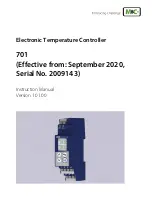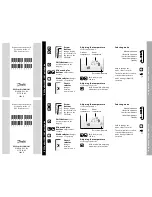
LR3D Technical Manual
Section D
Rev. IR (5/13/2020)
Troubleshooting
B&C Specialty Products
Page D - 3
bandc.com
• Correct (or prevent) noise problems by using a unitized grounding system, such as a
“ground block.” This averts small voltage differences between different ground points
— a common source of electrical noise (and erratic behavior in associated devices).
• The battery acts as a noise filter in the system. Poor connections to the battery, or a
battery in the initial stages of failing, can add to or even cause noise problems.
• Shielding of low-level audio leads (especially microphone leads or headset leads) is a
necessity. Sometimes the shields in the cables can separate from repeated flexing; so a
check of shield continuity with an ohmmeter may prove illuminating.
• Wire routing is important. Separate noise-carrying conductors (like “P”-leads) from
other wiring. Avoid running noisy wiring parallel to other wiring in the same bundle.
• Stop the noise at its source. Once the noise is “loose,” it can be difficult to filter it out
of all affected systems. Try to locate the offending item and correct the problem at that
point. Switching off the alternator, the mags (first one then the other), or any other
electrical equipment that generates noise should help to find the offender.
B&C is always ready to assist our customers with technical problems during construction and
thereafter. The safety of our friends and reliability of our products are top priority. If this guide
has not solved your problem, please feel free to contact us –
Phone: 316-283-8000 (Monday – Friday, 9:00am to 4:30pm Central time)
E-mail: [email protected]


































